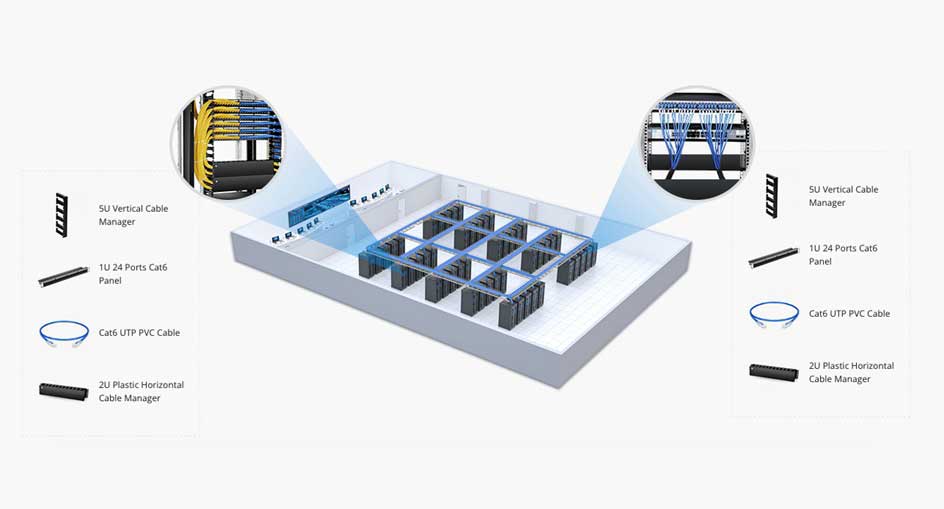A network cable, also known as an Ethernet cable, is a type of cable that is used to connect computer networks. These cables transmit data and information between two or more devices such as computers, routers, modems and switches. They are usually made with copper and have eight pins. Ethernet cables come in a variety of different lengths and colors, depending on the type of cable you need. The most common types of Ethernet cables are patch cables and installation cables.
Cat6 (Category 6)
– Max. speed up to 10 Gbps @ 55 m (164 ft.)
– Available in Shielded and Unshielded varieties.
Category 6 supports data transfer speeds up to 10 Gbps at 250 MHz along with improved crosstalk protection. The standard only supports the 10 Gbps speed up to 55 meters (164 feet), so if you need higher bandwidth in your network, Cat6 is the entry-level choice. Both Cat5e and Cat6 begin to become part of the bottleneck in your network as we see continuously faster Internet connections in both the home and office environment.
Cat6a (Augmented Category 6)
– Max. speed up to 10 Gbps @ 100 m (328 ft.)
– Available in Shielded and Unshielded varieties.
If your requirement is a 1- to 10-Gigabit Ethernet network, Cat6a is still currently the right choice for most circumstances. Cat6a supports the same 10 Gbps transmission speed as Cat6, but up to 100 meters (328 feet) and at 500 MHz. The cable also further reduces crosstalk.
Cat7 (Category 7)
– Max. Speed Up to 10 Gbps
– Only Shielded
Cat7 never superseded Cat6a since neither of the governing bodies approved the standard. As such, you will see many different claims from suppliers. Further confusion and uncertainty arose when two companies developed their own patented designs for new connectors (TERA developed by The Siemon Company; GG45 developed by Nexans). If you use Cat7 cable with Cat6a modular plugs, you will have better performance. Realistically, Cat6a is your better choice as it is a supported official standard, and you can be assured of quality and data integrity. Cat7 supports the same transmission speed and distance as Cat6a — 10 Gbps up to 100 meters (328 feet) — but at 600 MHz with even less crosstalk.
Cat8.x (Category 8, 8.1 [Class I]and 8.2 [Class II])
– Max. Speed Up to 40 Gbps- Only Shielded
Cat8 is recommended for data-center environments or high-speed switch-to-switch and server communications in a 25 Gbps or 40 Gbps copper network. Cat8 is the best choice unless you want to install a fiber network, too. Due to the design, Cat8, Cat8.1 and Cat8.2 support transmission speeds of 10 Gbps up to 100 meters (328 feet) or 25 Gbps and 40 Gbps up to 30 meters (98.5 feet) with an impressive 2,000 MHz frequency that even better prevents crosstalk. Where Cat8 and 8.1 are backward compatible, Cat8.2 is not since it does not use standard RJ45 connectors.


Copyright 2023 © All Right Reserved